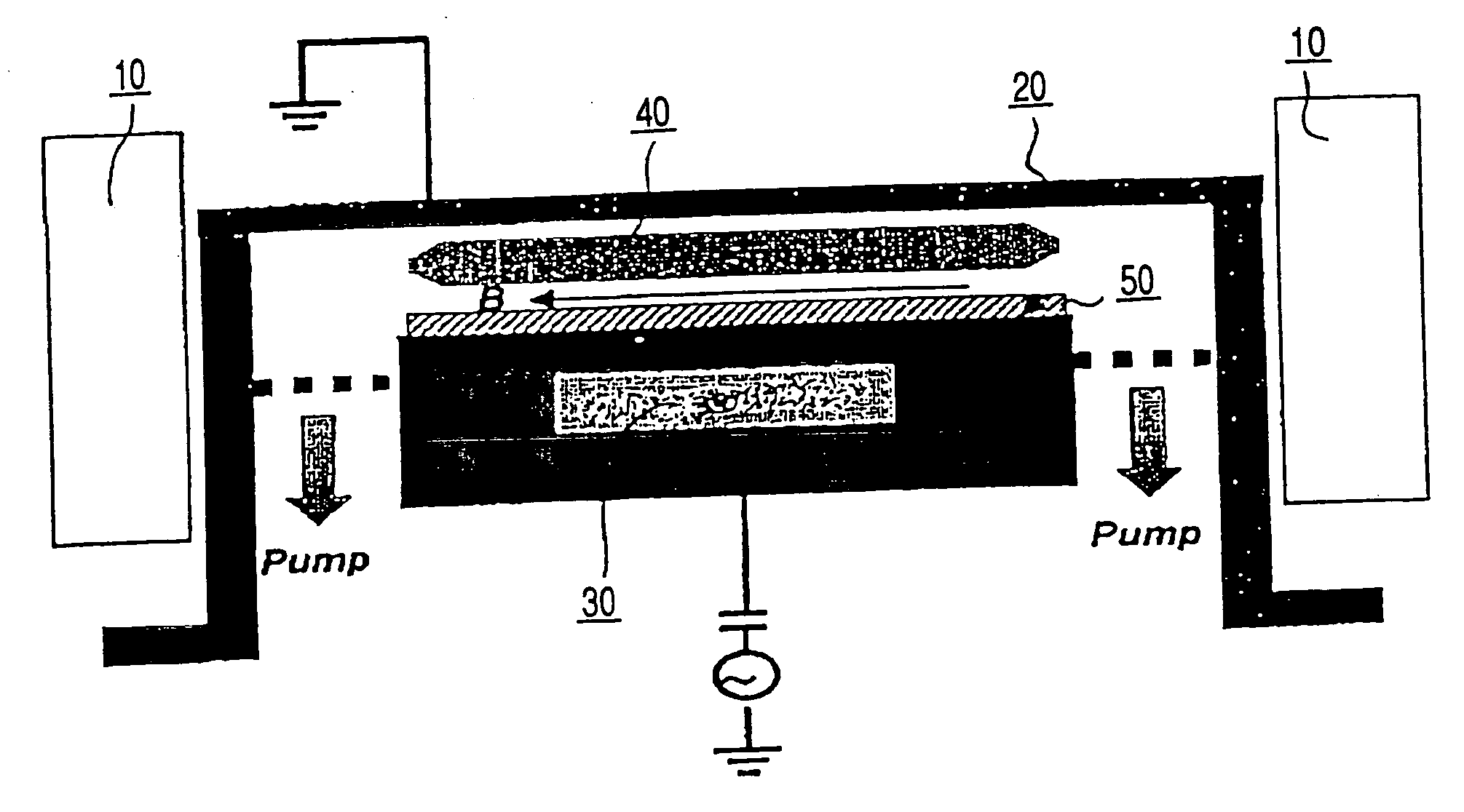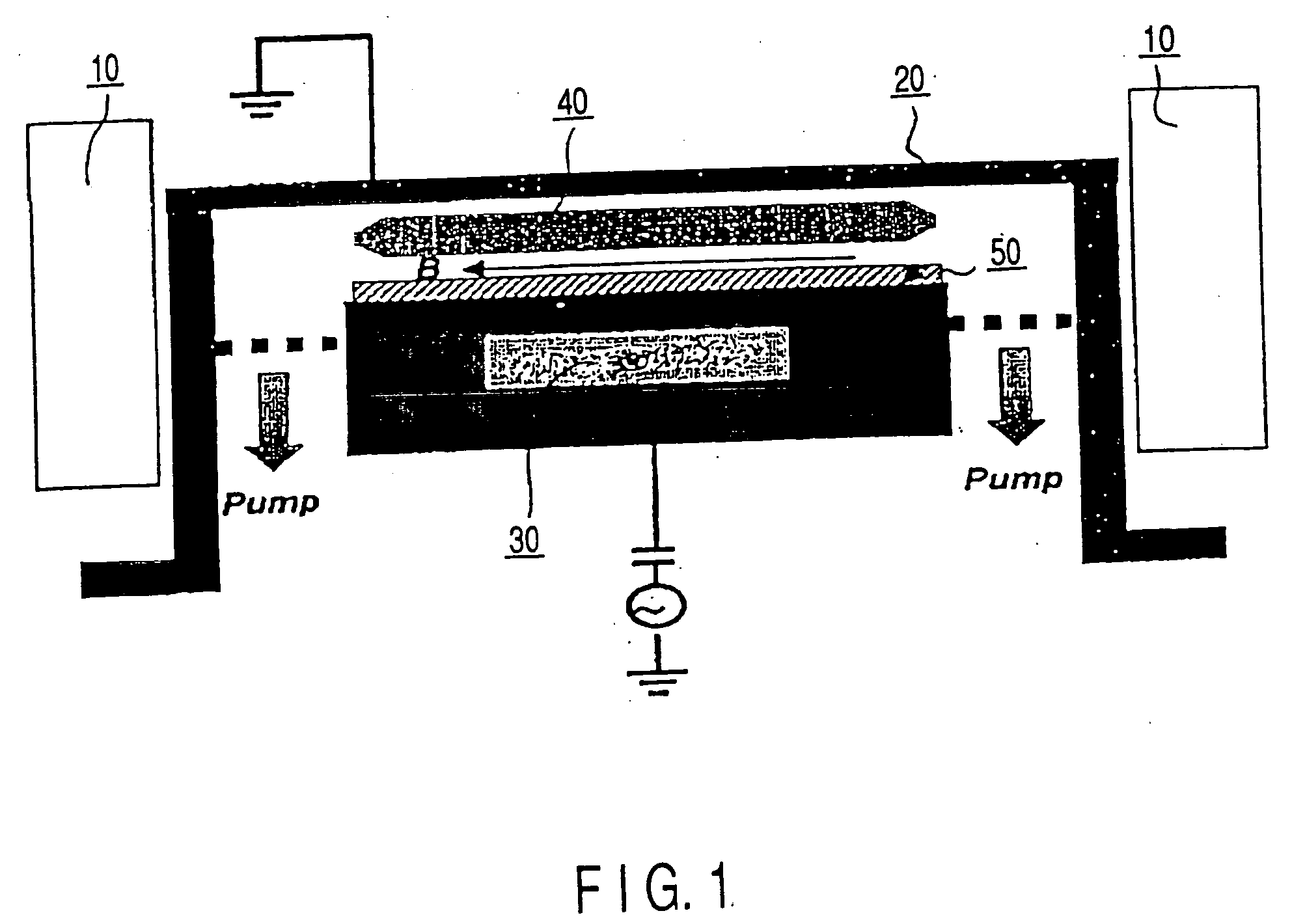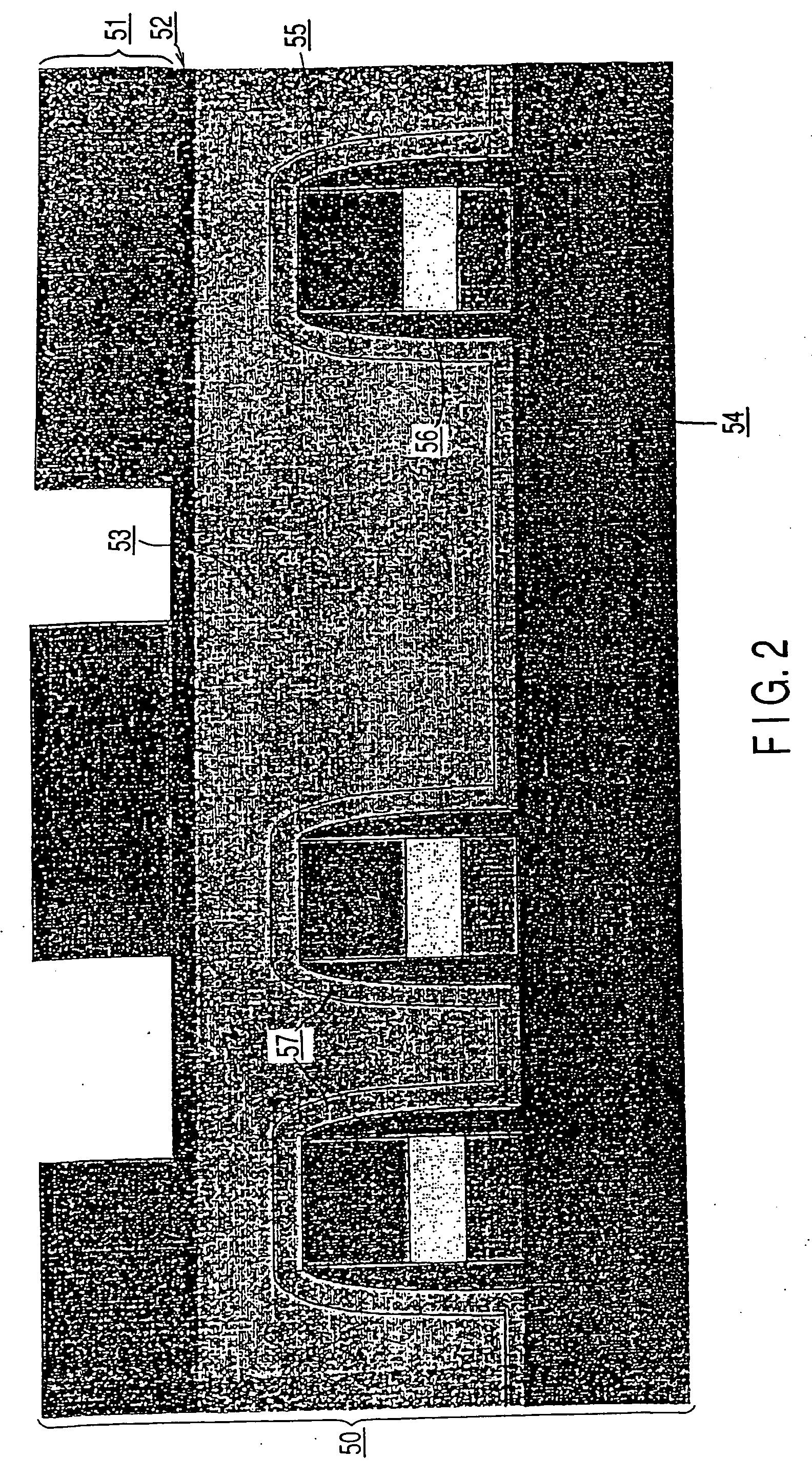Method of high selectivity SAC etching
a sac etching and high selectivity technology, applied in the direction of electrical equipment, decorative surface effects, decorative arts, etc., can solve the problems of etching stop phenomenon, inability to keep corner selectivity, and inability to complete etching, etc., to achieve high selectivity, large process window, and high etching rate
- Summary
- Abstract
- Description
- Claims
- Application Information
AI Technical Summary
Benefits of technology
Problems solved by technology
Method used
Image
Examples
example
Example 1
[0050] As a typical example of this invention, one of the etching recipes is described in the following for a high etch rate SAC etching process, with vertical island Contact etching at the same time.
Etching Recipe (1):Descum Etch:40 mT 1400 WCF4 / Ar / O2 = 80 / 160 / 20 sccm, 7 secILD Etch-1:30 mT 1700 WC4F8 / CO / Ar / O2 = 25 / 50 / 250 / 10 sccm,60 / 60° C. (note in this and the followingexamples, this represents temp of topelectrode and wall / temp of cathode)Back He C / E = 7 / 30 T, 45 secILD Etch-2:60 mT 1700 W C4F8 / CO / Ar / O2 = 20 / 00 / 500 / 10 sccm,60 / 60° C. Back He C / E = 7 / 30 T, 75 secNitride Etch:50 mT 800 W CHF3 / Ar / O2 = 10 / 100 / 20 sccm,Process Gap = 37 mm,Back He C / E = 7 / 40 T, 9 sec
[0051] The etch rate of ILD-Etch.1 (1st stage etching) was approximately 1.5 times faster than conventional SAC etching.
[0052] Moreover, combined with ILD-Etch.2 (2nd stage etching), the corner etching profile had a smooth and rounded shape. The shortest distance with etching recipe (1) between the corners of the...
example 2
[0059] Highly selective SAC etching technique with the vertical island Contact etching at the same time
Etching Recipe (2):Descum Etch:40 mT 1400 W CF4 / Ar / O2 = 80 / 160 / 20 sccm,7 secILD Etch-1:50 mT 1700 W C5F8 / CO / Ar / O2 =10 / 150 / 480 / 6 sccm, 60 / 60° C.,Back He C / E = 7 / 40 T, 122 secI LD Etch-2:50 mT 1500 WC5F8 / CO / Ar / O2 = 6 / 00 / 500 / 6 sccm, 60 / 60° C.Back He C / E = 7 / 40 T, 70 secNitride Etch:50 mT 800 W CHF3 / Ar / O2 = 10 / 100 / 20 sccm,60 / 60° C., Back He C / E = 7 / 40 T, 9 sec,Process Gap = 37 mm
[0060] Etching Recipe (2) includes C5F8 chemistries, which is more selective to SiN than C4F8, due to the higher C / F atomic-ratio, and could generate more carbon rich polymerization. However etching recipe (2) described above achieved vertical contact profile all over the wafer with greater than 87° walls at the 0.27 μm hole size.
[0061] Conventional highly selective SAC etching with C5F8 chemistries give slightly tapered profiles with around 82-84° at the 0.27 μm hole size. So the contact resistance would be...
example 3
[0067] Highly selective and high etch rate SAC etching technique with the vertical island Contact etching at the same time
Etching Recipe (3):Descum Etch:40 mT 1400 W CF4 / Ar / O2 = 80 / 160 / 20 sccm,7 secILD Etch-1:30 mT 1700 WC4F8 / CO / Ar / O2 = 25 / 50 / 250 / 10 sccm,60 / 60° C.,Back He C / E = 7 / 30 T, 45 secILD Etch-2:50 mT 1500 W C5F8 / CO / Ar / O2 = 10 / 00 / 500 / 10 sccm, 60 / 60° C.Back He C / E = 7 / 30 T, 90 secNitride Etch:50 mT 800 W CHF3 / Ar / O2 = 10 / 100 / 20 sccm,Process Gap = 37 mm,Back He C / E = 7 / 40 T, 9 sec
[0068] This example combined the benefits of C4F8 chemistry in Example 1 with the benefits of C5H8 chemistry in Example 2 and gave highly selective and high etch rate SAC etching with the vertical island Contact etching at the same time.
[0069] So Etching recipe (3) would be one example of the ultimate SAC etching technique to have a total solution for current ULSI fabrication.
[0070] Further etching recipes are provided below. These recipes could maintain about 700 from the corner of the poly gate, w...
PUM
| Property | Measurement | Unit |
|---|---|---|
| pressure | aaaaa | aaaaa |
| pressure | aaaaa | aaaaa |
| temperature | aaaaa | aaaaa |
Abstract
Description
Claims
Application Information
 Login to View More
Login to View More - R&D
- Intellectual Property
- Life Sciences
- Materials
- Tech Scout
- Unparalleled Data Quality
- Higher Quality Content
- 60% Fewer Hallucinations
Browse by: Latest US Patents, China's latest patents, Technical Efficacy Thesaurus, Application Domain, Technology Topic, Popular Technical Reports.
© 2025 PatSnap. All rights reserved.Legal|Privacy policy|Modern Slavery Act Transparency Statement|Sitemap|About US| Contact US: help@patsnap.com



